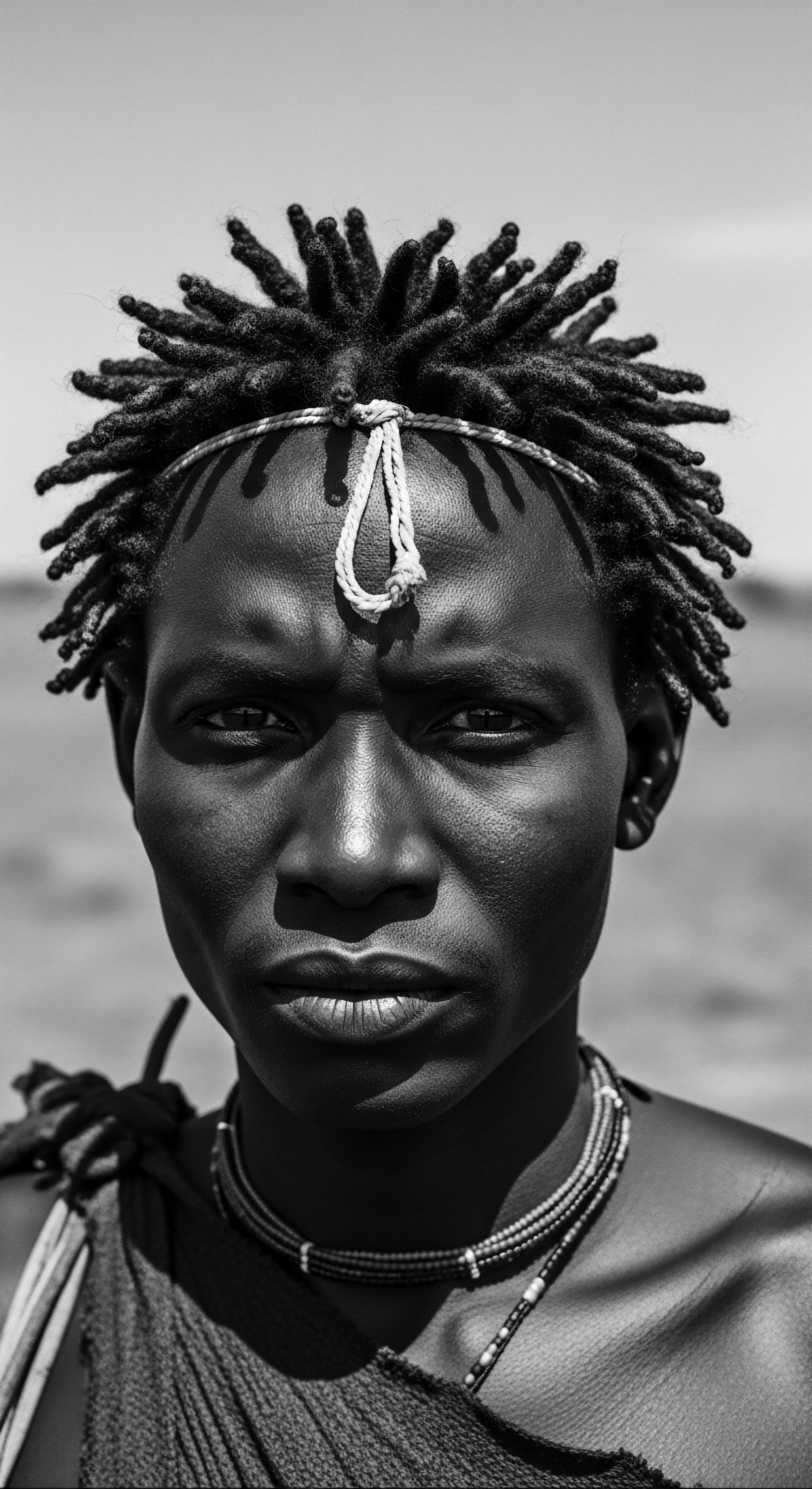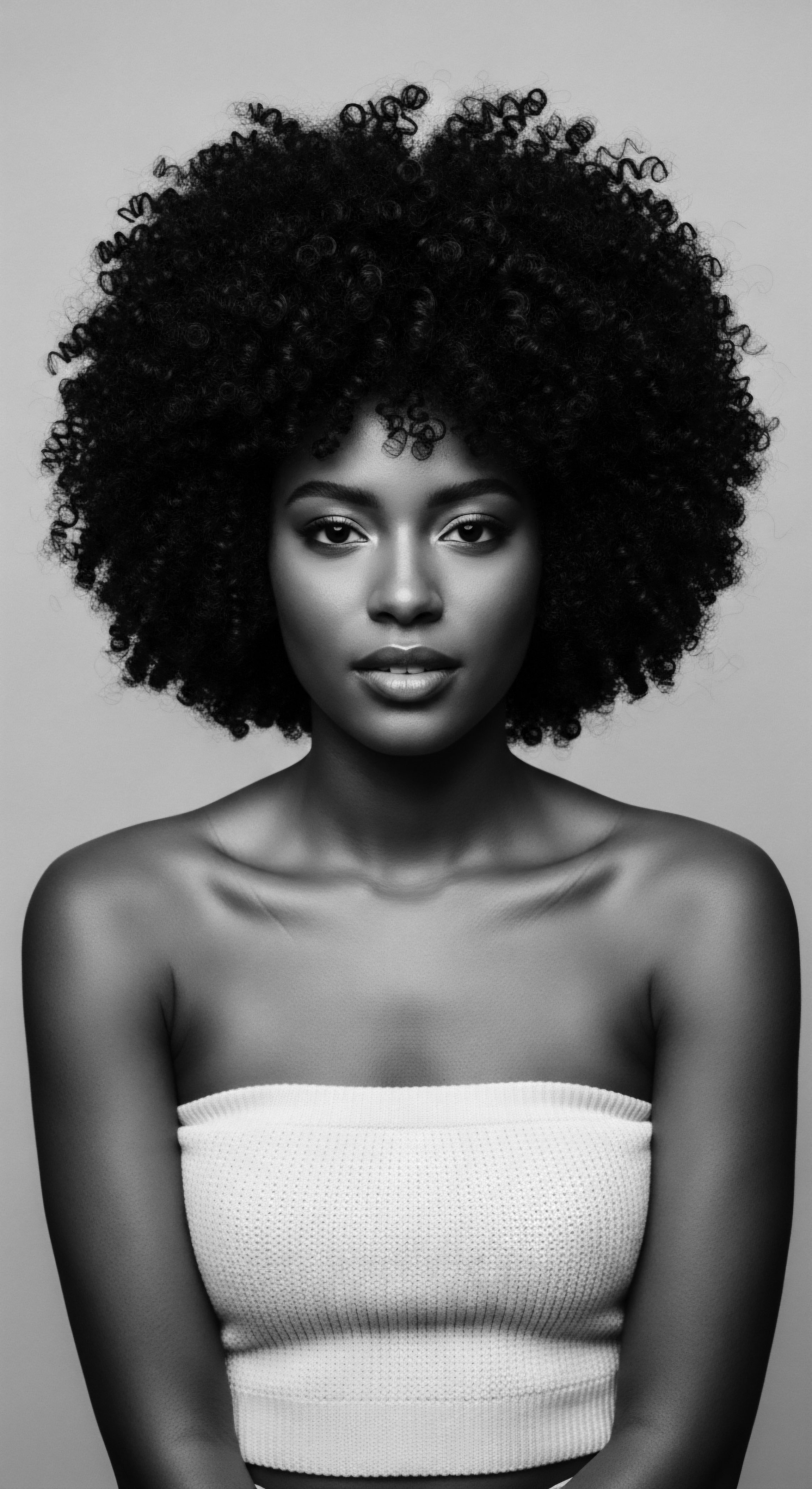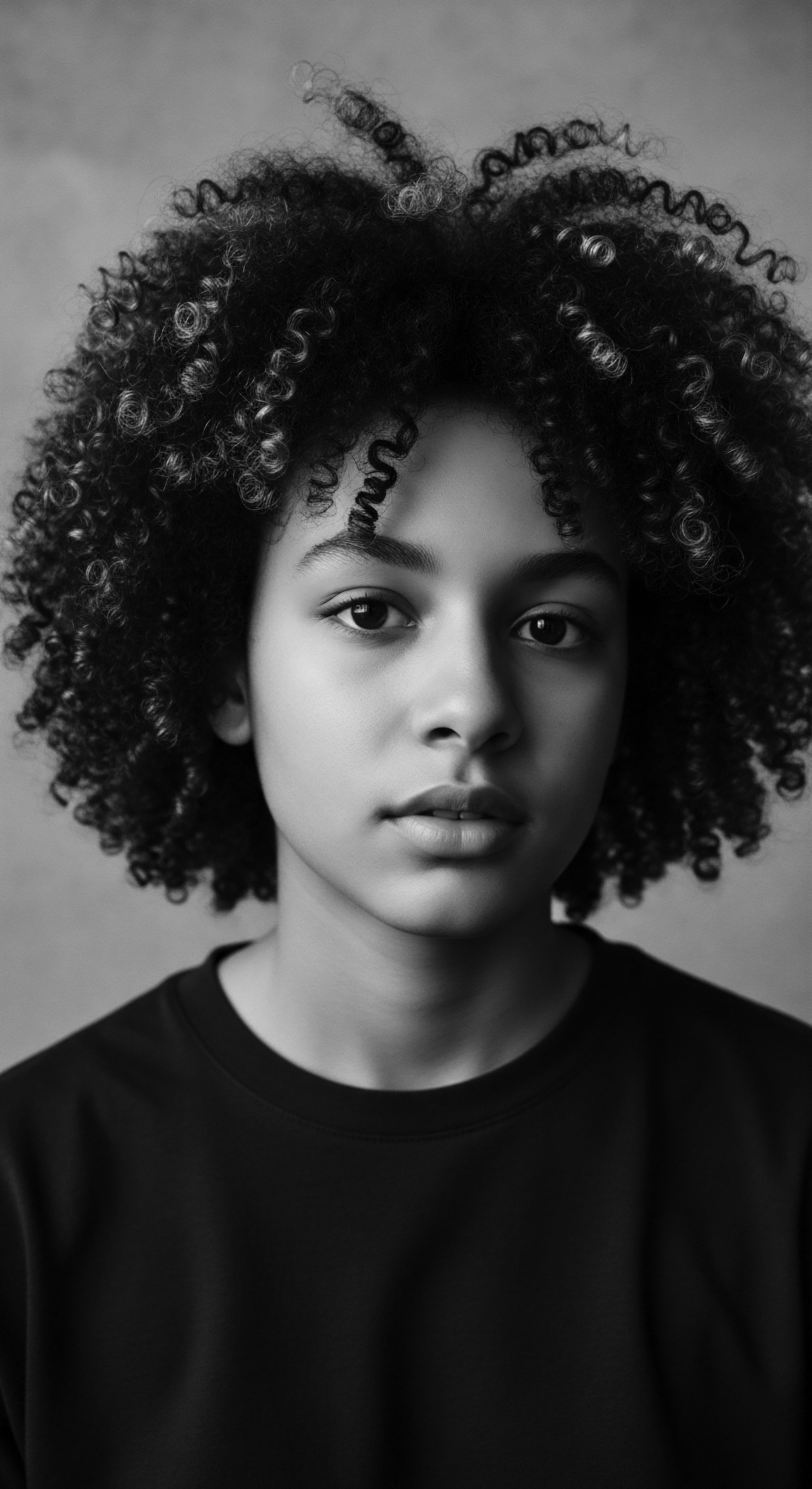
Fundamentals
To truly comprehend what “South Asia” signifies within the vibrant cosmos of textured hair heritage is to embark upon a contemplative journey, reaching beyond mere geographical boundaries. Here, “South Asia” designates an elemental understanding, an intrinsic knowing that courses through the very essence of Black and mixed-race hair experiences. It is not a distant land, but rather the deep, foundational wellspring of ancestral practices and biological truths that shape the unique character of these hair types. This conceptual lens allows us to discern the inherent resilience and profound beauty encoded within every curl, every coil, every twist, reflecting ancient wisdom.
The initial contact with “South Asia,” in this definitional sense, often arrives as an echo from the source—a primal whisper of elemental biology. Textured hair, with its diverse array of curl patterns and varied porosities, presents a distinct biological architecture. Each strand, from its follicular origin, carries genetic blueprints that dictate its shape, its tendency to resist moisture, and its particular disposition towards environmental influences. This foundational biological makeup, the very ground upon which heritage practices are built, forms the most fundamental layer of our understanding of this “South Asia.” Before any hands styled or any oils were applied, there was the inherent nature of the hair itself, a marvel of natural design.

The Seed of Self
Consider the single strand. It holds within its structure a complete history, a silent testament to the countless generations that have come before. This “South Asia” reveals how hair is a living fiber, deeply interconnected with the human body’s holistic rhythms and the earth’s nurturing bounty.
Early ancestral practices, often born from necessity and a profound respect for natural cycles, recognized this inherent connection. They sought to work with the hair’s intrinsic properties, rather than against them, fostering a care that was deeply attuned to its needs.
Such elemental care, the very first stirrings of textured hair wellness, involved simple yet potent gestures. Gathering botanicals from local landscapes, observing the subtle responses of hair to natural elements, and understanding the rhythm of growth and renewal – these were the initial expressions of this profound South Asia. It speaks to a time when knowledge was not compartmentalized, when the well-being of the body, the spirit, and the hair were intrinsically linked.
“South Asia,” in the context of textured hair, represents the elemental origins and inherent resilience of Black and mixed-race hair heritage.

Connecting with the Earth’s Bounty
Across various traditional communities, long before the advent of modern cosmetic science, an intimate kinship with the botanical world guided hair care. The leaves, barks, seeds, and roots of plants were observed for their properties. Their ability to cleanse, to soften, to provide nourishment, or to offer protective coatings was carefully cataloged and passed down. This knowledge was practical, certainly, yet it was also imbued with spiritual significance, recognizing the life force present in every natural offering.
- Shea Butter ❉ Derived from the karite tree, this emollient has provided profound moisture and protection, serving as a foundational element in care rituals across West Africa for centuries (Mouchane et al. 2023).
- Coconut Oil ❉ Valued for its penetrating properties and ability to seal moisture, it has been a staple in hair care across many tropical regions with a diaspora presence, offering ancestral conditioning.
- African Black Soap ❉ Crafted from plantain skins, cocoa pods, and shea butter, this cleansing agent offered a gentle yet effective way to purify the scalp and strands without stripping natural oils, connecting to deep cleansing traditions.

Intermediate
As we deepen our comprehension of “South Asia” within the domain of textured hair, we transition from the purely elemental to the tender thread of communal practices and shared knowledge. This stage of understanding recognizes that hair care for Black and mixed-race communities transcends individual routine; it becomes a deeply social, intergenerational activity, a living repository of history and connection. The “South Asia” here manifests as the collective memory and the shared rituals that have shaped textured hair experiences through time.
Across generations, hands have tended to hair, passing down not merely techniques, but also stories, resilience, and identity. This communal tending, often occurring in intimate settings like family homes or community spaces, created a sacred space where wisdom was imparted and bonds were reinforced. The patient rhythm of braiding, the gentle application of salves, the quiet moments of shared conversation – these formed the very fabric of heritage, allowing traditions to persist even through formidable challenges. The tender thread represents the continuity of care that has been steadfast, binding generations to one another.
Communal hair care practices, rich with shared knowledge and intergenerational bonding, embody the “Tender Thread” of South Asia’s heritage in textured hair.

Whispers of Resilience
During periods of immense adversity, such as the transatlantic slave trade and its aftermath, the meaning of hair care transformed. It became a profound act of resistance, a quiet assertion of selfhood when overt expressions were suppressed. The hair, often shorn upon capture as an act of dehumanization, became a canvas for reclaiming identity, a secret language.
This difficult chapter in history, where the inherent dignity of hair was systematically attacked, highlights the enduring power of this conceptual “South Asia” in the face of profound attempts at erasure (Sieber & Herreman, 2000). The forced removal of hair was a calculated effort to strip visual representation of tribal affiliation, social status, culture, and personal identity.

Beyond Adornment ❉ Hair as a Cartographer’s Code
A powerful historical example of this profound connection to South Asia’s heritage within Black hair experiences is observed in the ingenuity displayed by enslaved African people in the Americas. They transformed their hairstyles into intricate systems of communication and survival. Cornrows, a style deeply rooted in African tradition, transcended mere aesthetic arrangement; they became vital tools for covert knowledge transfer.
Research indicates that enslaved women would meticulously braid patterns into their hair that served as encoded maps to escape routes. These patterns were carefully chosen, their twists and turns reflecting the topography of the land, guiding those seeking freedom (Byrd & Tharps, 2014). Moreover, these ingenious hair designs sometimes concealed precious rice grains or other seeds, smuggled from Africa or gathered in the new land, providing sustenance for desperate journeys or future planting upon reaching sanctuary (Creative Support, n.d.).
This practice speaks volumes about the intrinsic link between hair, survival, and the enduring spirit of heritage. The hair itself became a medium of liberation, a testament to the profound resilience of a people determined to maintain their cultural memory and secure their freedom.
Such acts of profound self-preservation and communal solidarity, woven into the very strands of hair, exemplify how “South Asia,” as a heritage concept, informed and enabled forms of silent resistance. It underscores the deep significance of hair as a vessel for historical memory, communal support, and acts of quiet defiance. This practice also highlights that hair care was not solely about beauty; it was frequently a matter of life, identity, and the transmission of vital information under the direst circumstances.
- Cornrows as Maps ❉ Specific patterns were braided to denote pathways through unfamiliar terrains, leading towards freedom for enslaved individuals.
- Seed Concealment ❉ Rice, vegetable seeds, and even gold fragments were hidden within tightly braided cornrows, offering a means of survival and future sustenance beyond the plantations.
- Status and Communication ❉ Beyond escape, hairstyles in West African societies historically communicated social status, marital status, wealth, age, and tribal affiliation, serving as a complex visual language (Byrd & Tharps, 2014; Creative Support, n.d.).

Academic
The academic elucidation of “South Asia,” when applied to the rich domain of textured hair heritage, delineates a complex, multi-layered framework. This scholarly interpretation moves beyond the rudimentary to offer a comprehensive understanding of the term, positioning it as the profound conceptual nexus where elemental biology, historical oppression, cultural resilience, and contemporary identity converge. Here, “South Asia” constitutes a rigorous academic designation for the enduring principles, historical processes, and cultural dynamics that have shaped the Black and mixed-race hair experience globally, informed by meticulous research and anthropological inquiry. Its meaning is thus a deeply researched interpretation, grounded in data that reveals long-term consequences and the transformative power of heritage.

A Confluence of Forces
Understanding “South Asia” at this academic level requires a critical examination of how hair, far from being a mere biological appendage, has historically functioned as a powerful socio-political marker. In pre-colonial African societies, hairstyles conveyed intricate information about a person’s status, lineage, age, and religious adherence (Sieber & Herreman, 2000). This rich semiotic system was fundamentally disrupted by European colonization and the transatlantic slave trade, where the deliberate shaving of African captives’ heads represented a brutal initial act of cultural erasure and dehumanization (Rosado, 2003; Sieber & Herreman, 2000). The imposition of Eurocentric beauty standards followed, conditioning generations to perceive natural textured hair as “unruly” or “unprofessional”.
The academic lens reveals that the journey of textured hair is profoundly linked to resistance. The “Black is Beautiful” movement of the 1960s, for instance, marked a significant turning point, redefining beauty norms and asserting natural hair as a symbol of pride and defiance against oppressive standards (Banks, 2000). This period underscored the intrinsic connection between hair, self-esteem, and collective identity formation for Black individuals. The deliberate choice to wear an afro or cornrows became a visible statement of cultural and political solidarity, a rejection of forced assimilation, and a reclamation of ancestral aesthetic values.
Academically, “South Asia” signifies the complex interplay of biology, history, and identity that defines textured hair heritage within global Black and mixed-race communities.

The Unbound Helix ❉ Decoding Resilience and Agency
The deepest stratum of “South Asia’s” academic meaning lies in its representation of the inherent agency within textured hair—the “Unbound Helix.” This term speaks to the hair’s capacity for adaptation, its symbolic fluidity, and its continuous role in voicing identity and shaping futures. It acknowledges that despite centuries of attempts to control or denigrate it, textured hair has consistently served as a site of self-expression, innovation, and cultural preservation. The biological resilience of the hair itself mirrors the cultural resilience of the communities who wear it.
Modern scientific understanding, in fact, often validates the empirical wisdom of ancestral practices. Contemporary ethnobotanical studies, for example, are now documenting the efficacy of traditional plant-based remedies for hair and scalp care, often revealing active compounds that align with historical uses (Mouchane et al. 2023; Cosmetopoeia of African Plants. 2024).
This intersection of ancient knowledge and contemporary validation strengthens the academic understanding of “South Asia” as a reservoir of holistic hair wellness. For instance, in North Africa, plants like Ziziphus Spina-Christi are still used for their anti-dandruff properties, a practice that aligns with modern understanding of scalp health. Similarly, Vitellaria Paradoxa (shea butter) is recognized for its emollient properties in West Africa, a traditional use now well-documented in cosmetic science.
| Ancestral Practice Scalp Cleansing & Conditioning |
| Traditional Botanical Source Ziziphus spina-christi (Christ's Thorn Jujube) |
| Observed Benefit (Historical) Anti-dandruff, gentle cleansing, hair strengthening in various African cultures. |
| Modern Scientific Link (Roothea's Interpretation of "South Asia") Acknowledged for antifungal properties, supporting a balanced scalp microbiome for textured hair health. |
| Ancestral Practice Moisture Retention & Protection |
| Traditional Botanical Source Vitellaria paradoxa (Shea Butter) |
| Observed Benefit (Historical) Deep conditioning, frizz reduction, protection from environmental stressors, widely used across West Africa. |
| Modern Scientific Link (Roothea's Interpretation of "South Asia") Rich in fatty acids (oleic, stearic) that provide occlusive barrier, reducing transepidermal water loss in high-porosity textured hair. |
| Ancestral Practice Hair Growth & Vitality |
| Traditional Botanical Source Various African Plants (e.g. Sesamum orientale) |
| Observed Benefit (Historical) Promoting hair growth, preventing breakage, enhancing overall hair vitality, documented in ethnobotanical surveys. |
| Modern Scientific Link (Roothea's Interpretation of "South Asia") Ongoing research into compounds that modulate hair follicle cycle, provide topical nutrition, and support scalp microcirculation, mirroring ancestral aims. |
| Ancestral Practice These examples underscore how traditional plant knowledge, a core component of "South Asia's" heritage, continually informs contemporary approaches to textured hair care, validating ancient practices through modern inquiry. |
The sustained struggle against hair discrimination, epitomized by movements like the CROWN Act, further crystallizes this academic definition. The CROWN 2023 Research Study revealed that 41% of Black women altered their hair from its natural, textured state to straight for job interviews, with 54% believing straight hair was necessary for such occasions (CROWN 2023 Research Study). This statistic is a poignant testament to the ongoing societal pressures that seek to constrain the “Unbound Helix.” It highlights how deeply ingrained biases remain, compelling individuals to modify their hair to conform to narrowly defined, often Eurocentric, standards of professionalism.
Yet, the continuous growth of the natural hair movement, supported by global communities and digital platforms, demonstrates a powerful counter-narrative. It represents a collective determination to reclaim and celebrate the diverse forms of textured hair, asserting its inherent beauty and cultural significance. This ongoing process of reclamation, informed by historical understanding and scientific insights into hair’s unique structure, contributes to the evolving meaning of “South Asia” as a dynamic, living concept—a testament to resilience, identity, and profound self-acceptance.

Reflection on the Heritage of South Asia
As we draw our exploration of “South Asia” to a close, a profound realization settles upon us ❉ this conceptual terrain is not static. It is a living, breathing archive, constantly being written and rewritten by the hands that tend, the voices that affirm, and the spirits that remember. The South Asia of textured hair heritage is a testament to the enduring power of ancestral wisdom, the quiet strength found in communal care, and the fierce, unyielding will to define beauty on one’s own terms. It speaks to the journey from the elemental truth of a coiled strand to its vibrant expression as an unbound helix, a powerful symbol of identity in a world that often seeks to standardize.
This heritage is not merely a collection of past practices; it is a vital, animating force in the present. It informs how we choose our products, how we engage with our communities, and how we stand in the world. It reminds us that our hair, in all its glorious forms, carries stories, resilience, and a legacy of profound creativity. To truly understand “South Asia” in this context is to acknowledge the sacred dance between biology and culture, between memory and aspiration.
The South Asia of textured hair heritage is a living archive, continuously shaped by ancestral wisdom, communal care, and the ongoing affirmation of self.
The journey to embrace the intrinsic beauty of textured hair is, for many, a journey of returning home—to the wisdom of the elders, to the rhythms of nature, to the quiet confidence of a heritage reclaimed. It is a journey that honors the ingenuity of those who braided maps into their strands and the resilience of those who defied oppressive gazes. This profound connection to South Asia, this deep well of inherited knowledge, remains an infinite source of strength, inviting us to wear our hair not simply as an adornment, but as a living testament to our shared history and our collective future. In every curl, in every coil, the legacy whispers, inviting us to listen, to learn, and to celebrate.

References
- Banks, C. (2000). Hair ❉ A Cultural History of Hair Fashion in America. University of Georgia Press.
- Byrd, A. & Tharps, L. (2014). Hair Story ❉ Untangling the Roots of Black Hair in America. St. Martin’s Griffin.
- Mouchane, M. Taybi, H. Gouitaa, N. & Assem, N. (2023). Ethnobotanical Survey of Medicinal Plants used in the Treatment and Care of Hair in Karia ba Mohamed (Northern Morocco). Journal of Medicinal Plants and By-products, 13(1), 201-208.
- Rosado, R. (2003). Identity, culture and communication ❉ The importance of hair in the African diaspora. (Unpublished doctoral dissertation). University of Massachusetts.
- Sieber, R. & Herreman, F. (2000). Hair in African Art and Culture. Museum for African Art.
- Greene, A. (2012). Locked Up ❉ Hair, Identity, and the Legal System. Columbia Journal of Gender and Law, 21(1), 173-206.
- CROWN 2023 Research Study. (2023). The CROWN Act ❉ Research Study Summary. Dove.
- Cosmetopoeia of African Plants in Hair Treatment and Care ❉ Topical Nutrition and the Antidiabetic Connection? (2024). Diversity, 16(2), 96.
